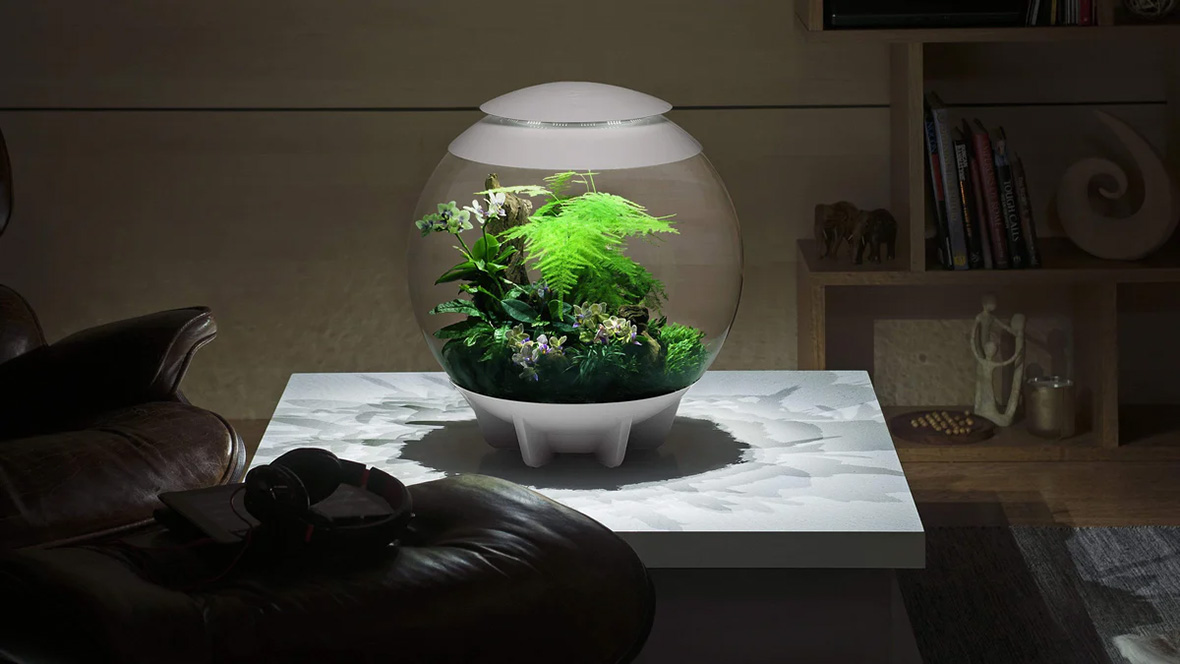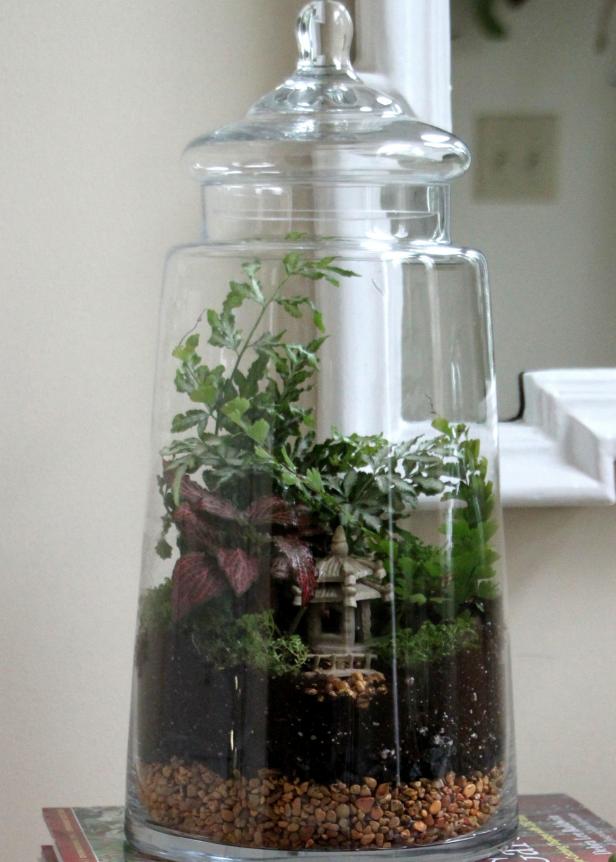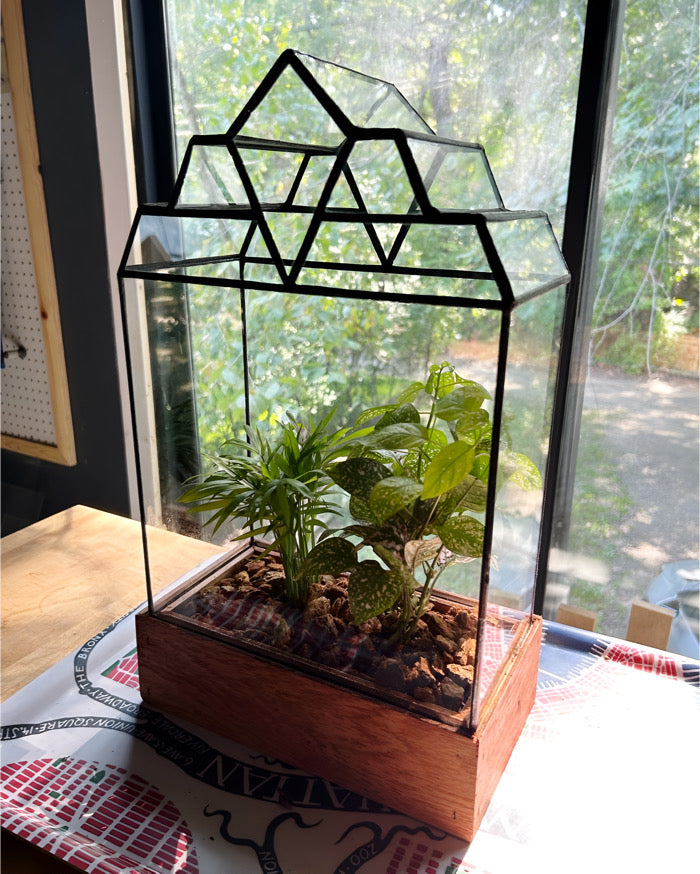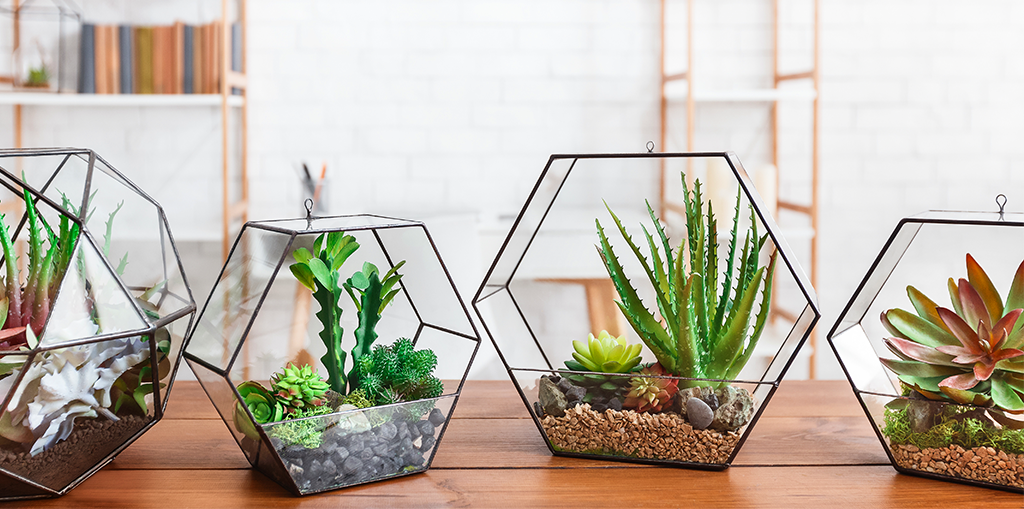What is an indoor terrarium?

An indoor terrarium is a miniature garden enclosed in a glass container that allows you to bring a piece of nature into your home. It is a self-contained ecosystem that requires minimal maintenance and provides a beautiful and calming addition to any space.
Indoor terrariums come in various shapes and sizes, from small tabletop versions to larger floor-standing designs. They can be customized to suit your personal style and preferences, making them a versatile and unique home decor option.
Benefits of having an indoor terrarium

Adds natural beauty to your home
Having an indoor terrarium adds a touch of natural beauty to your home. The lush greenery and vibrant colors of the plants create a visually appealing focal point that can enhance any room. Whether you choose to place it on a coffee table, shelf, or windowsill, an indoor terrarium instantly brings life and freshness to your living space.
Promotes relaxation and stress relief
Spending time near nature has been proven to reduce stress and promote relaxation. Indoor terrariums provide a miniaturized version of nature that can have a similar effect. The act of tending to your terrarium, such as watering and pruning, can be a therapeutic and calming activity. The presence of plants also helps to purify the air, creating a healthier and more serene environment.
Improves indoor air quality
Indoor air quality can often be compromised by pollutants and toxins present in our homes. Indoor terrariums can help improve air quality by acting as natural air purifiers. Plants absorb carbon dioxide and release oxygen, helping to freshen the air.
Additionally, certain plants, such as ferns and spider plants, have been found to remove harmful toxins like formaldehyde and benzene from the air, making your indoor environment healthier and more enjoyable.
Types of plants for indoor terrariums

Succulents
Succulents are a popular choice for indoor terrariums due to their low maintenance requirements and unique appearance. These plants have thick, fleshy leaves that store water, allowing them to survive in dry conditions. They come in a variety of shapes, sizes, and colors, making them a versatile option for terrariums.
Air plants
Air plants, also known as Tillandsias, are another great choice for indoor terrariums. These plants do not require soil to grow and can be attached to various surfaces within the terrarium.
They absorb moisture and nutrients from the air, making them incredibly low maintenance. Air plants come in a range of shapes and sizes, adding an interesting and exotic element to your terrarium.
Mosses
Mosses are excellent plants for creating a lush and verdant terrarium. They thrive in moist environments and provide a soft and carpet-like appearance. Mosses can be used as a base layer or as a decorative element in your terrarium. They require high humidity and indirect light, making them ideal for enclosed glass containers.
Ferns
Ferns are a classic choice for indoor terrariums due to their graceful and delicate foliage. They prefer low to medium light conditions and thrive in high humidity. Ferns add a touch of elegance and a lush green backdrop to your terrarium. With their feathery fronds and intricate patterns, they create a visually appealing and soothing environment.
How to create and maintain an indoor terrarium

Choosing the right container
When creating an indoor terrarium, it is important to choose the right container. Opt for a glass container with a lid or a container that can be covered to create a humid environment.
The size of the container will depend on the plants you choose and the space you have available. Ensure that the container has proper drainage to prevent waterlogging.
Layering the terrarium
To create a successful terrarium, it is essential to layer the components properly. Start with a layer of small rocks or pebbles at the bottom to aid in drainage. Add a layer of activated charcoal to prevent odors and keep the terrarium fresh.
Next, add a layer of sphagnum moss or a thin layer of horticultural charcoal to separate the soil from the drainage layer. Finally, add a layer of well-draining potting soil suitable for the plants you have chosen.
Watering and light requirements
Watering requirements for indoor terrariums will vary depending on the plants you have selected. It is important to research the specific needs of your plants and adjust watering accordingly. Generally, terrariums require less frequent watering compared to traditional potted plants.
Monitor the moisture levels by touching the soil and adjust watering as needed. Place your terrarium in a location that receives indirect light, as direct sunlight can cause excessive heat and damage the plants.
Maintenance tips
Maintaining an indoor terrarium involves regular care and attention. Prune any dead or yellowing leaves to maintain the overall health and appearance of the plants. Remove any debris or fallen leaves from the terrarium to prevent mold or pests.
Monitor the humidity levels within the terrarium and adjust as needed. If condensation builds up on the glass, remove the lid temporarily to allow for air circulation. Regularly check for signs of pests and treat accordingly.
Decorating with indoor terrariums
 Indoor terrariums offer endless possibilities for decorating your home. They can be placed on tabletops, shelves, or even hung from the ceiling to create a unique and eye-catching display. Consider incorporating different sizes and shapes of terrariums to add visual interest.
Indoor terrariums offer endless possibilities for decorating your home. They can be placed on tabletops, shelves, or even hung from the ceiling to create a unique and eye-catching display. Consider incorporating different sizes and shapes of terrariums to add visual interest.
You can also personalize your terrarium by adding decorative elements such as figurines, stones, or fairy lights. Let your creativity shine and use your terrarium as a centerpiece or focal point in any room.
Conclusion

Indoor terrariums are a wonderful way to bring nature into your home. They provide numerous benefits, including adding natural beauty, promoting relaxation, and improving indoor air quality. With a wide variety of plants to choose from and the ability to customize your terrarium, you can create a unique and personalized piece of living art.
By following proper care and maintenance guidelines, you can enjoy the beauty and tranquility of your indoor terrarium for years to come.null
FAQ
What do you need for an indoor terrarium?
You will need a container with no drainage holes, terrarium plants, sheet moss, gravel or stones, activated charcoal, sterile potting mix, a large spoon, and a spray bottle.
How do you start an indoor terrarium?
To start an indoor terrarium, layer pebbles, charcoal, and potting soil in a clean container. Then, add your plants, stones, moss, or sand, and any finishing touches.
What is an indoor terrarium called?
An indoor terrarium is also known as a glass garden, vivarium, or wardian case.
Originally posted 2023-11-15 11:34:35.

